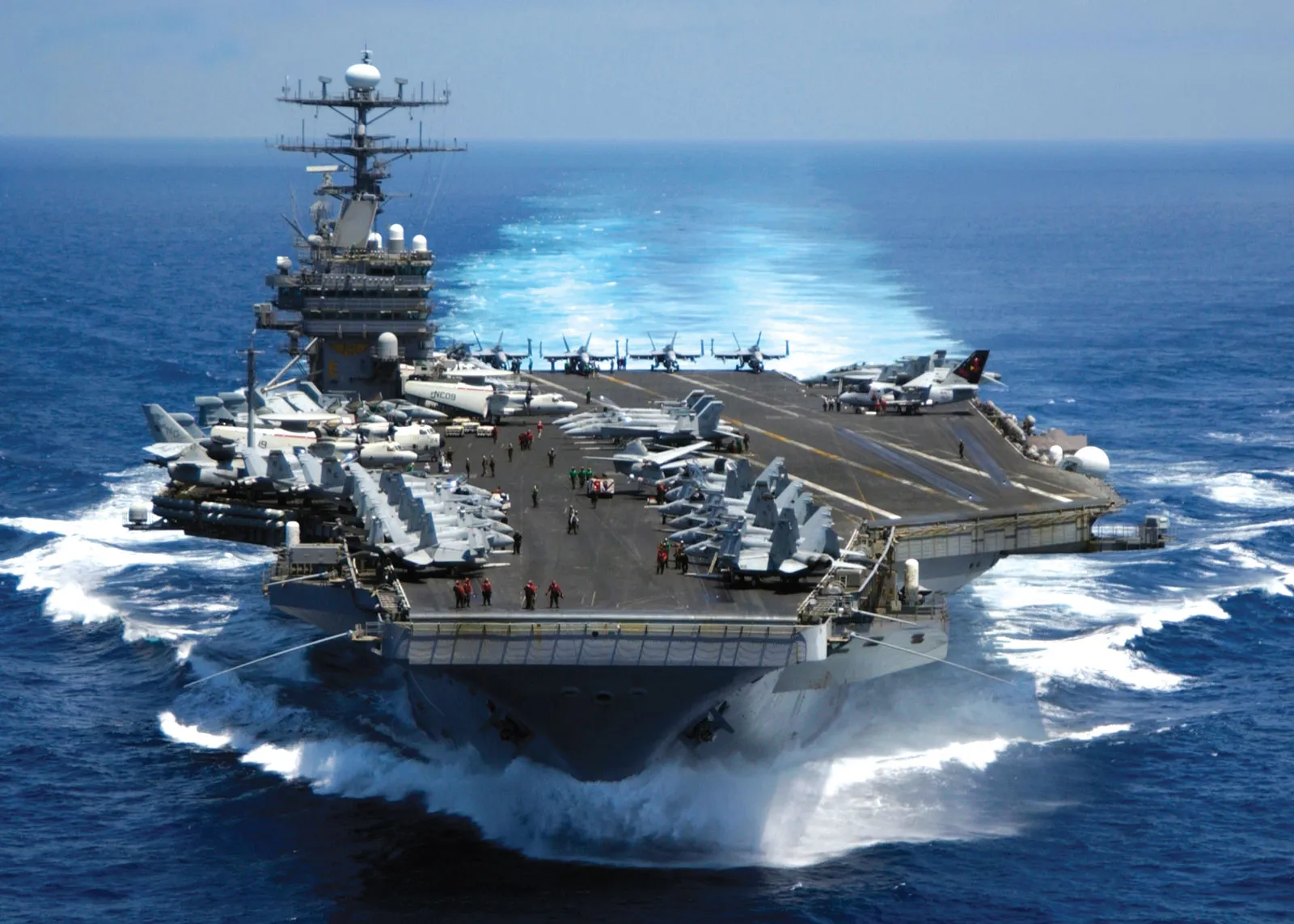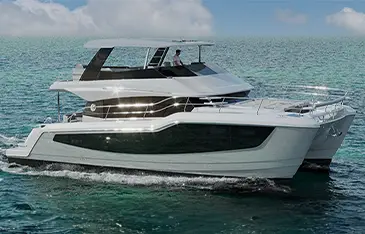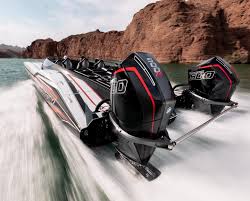Nautical Flags: Essential Guide for Maritime Communication
Nautical flags have long played a vital role in maritime communication, acting as a visually efficient way for ships to transmit crucial information across vast distances. With their vivid colors and distinctive shapes, these flags are capable of conveying a broad range of messages, from signaling distress to identifying a vessel's nationality. By understanding the history and various types of nautical flags, one can better appreciate their critical role in ensuring the safety and smooth conduct of seafaring ventures.

The roots of using flags for communication can be traced back to ancient civilizations, but the development of a standardized system has made them an indispensable part of modern maritime practices. The International Code of Signals, established in 1857, created a systematic approach to communication between vessels, allowing sailors to use a combination of different flags to represent letters, numbers, and specific messages. In addition to the nautical flag alphabet, colors and patterns bear significance when interpreting their meaning, further expanding the range of messages that can be sent using these visual cues.
Aside from signaling and communication, nautical flags are often seen in various situations, such as races, ceremonies, and decorations on recreational boats. Material and quality are essential factors to consider when selecting nautical flags, as they must withstand harsh maritime conditions. As awareness and understanding of this unique language continue to grow, the public remains intrigued by its history, use, and the frequently asked questions surrounding nautical flags.

Key Takeaways
- Nautical flags have been an essential element of maritime communication for centuries, evolving into standardized systems like the International Code of Signals.
- Different flag combinations represent letters, numbers, and messages, with colors and patterns aiding in interpretation.
- Nautical flags are used in multiple scenarios, including races and recreational boating, making their material and quality vital for prolonged use.
History of Nautical Flags
Nautical flags have been an essential part of maritime communication for centuries. They serve various purposes such as signaling, identification, and even as decorative elements on ships. The history of nautical flags can be traced back to the time of ancient civilizations when maritime cultures like the Egyptians, Greeks, and Romans used flags to convey messages between ships and from ships to shore.
In the Middle Ages, the use of flags became more prevalent as maritime trade flourished, and seafaring nations started using distinctive national flags. The British Navy, for example, established a system of flags for specific commands known as the British Naval Flags of Command. This system assigned different colored ensigns to categorize naval ships, government service ships, ships in the naval reserve, and merchant vessels.
The development of the International Code of Signals in the 19th century marked a significant milestone in the standardization of nautical flags. It introduced a set of flags representing letters of the alphabet, numbers, and various maritime safety situations. This enabled ships of different nationalities to communicate effectively with each other at sea or with shore stations, regardless of the language spoken by the crew.
Today, nautical flags continue to play a crucial role in maritime communication and safety. The semiotics of flags highlights their importance as a versatile and enduring means of conveying information at sea, from signaling distress to relaying navigational information. Flags remain an integral part of maritime culture and continue to evolve to meet the modern demands of the global shipping industry.

Types of Nautical Flags
Nautical flags are an essential tool in maritime communication. They serve various purposes, such as conveying messages, identifying ships, and signaling distress or emergencies. This section will cover the main types of nautical flags, including Alphabet Flags, Numeral Pennants, Substitutes, and Repeaters.
Alphabet Flags
Alphabet Flags represent the 26 letters of the alphabet. Each flag has a unique design and color, making it easy to identify and differentiate them from one another. They are used to spell out messages, call signs, or abbreviations and can be combined with other flag types for more complex messages. The International Code of Signals (ICS) is a widely used system for maritime signaling that utilizes these flags.
Numeral Pennants
Numeral Pennants represent numbers from 0 to 9. Similar to Alphabet Flags, these flags have distinct designs and colors, enabling clear communication of numerical information. Numeral Pennants are often used in combination with Alphabet Flags to relay more specific information, such as distance, speed, or time.

Substitutes
Substitutes, also known as repeater flags, come into play when a letter or number occurs more than once in a given message or sequence. These flags signify that the associated letter or number should be used again. For example, if a ship uses the same Alphabet Flag twice in a message, a substitute flag would be raised in place of the second occurrence. There are three types of substitute flags commonly used in nautical signaling:
- First substitute flag: Indicates the repeating of the first letter or numeral flag
- Second substitute flag: Indicates the repeating of the second letter or numeral flag
- Third substitute flag: Indicates the repeating of the third letter or numeral flag
Repeaters
Repeaters, like Substitutes, are used when a particular flag appears more than once in a message. However, Repeaters specifically denote the repetition of entire groups of flags, such as the repetition of a call sign or a series of coordinates. Repeater flags can help ensure that messages are communicated accurately and without confusion.
In summary, nautical flag signaling is an essential aspect of maritime communication. The various types of flags including Alphabet Flags, Numeral Pennants, Substitutes, and Repeaters, allow for the transmission of diverse messages, contributing to effective communication and safety at sea.

International Code of Signals
Meanings
The International Code of Signals (ICS) is a comprehensive system of flags and signals used by ships and other maritime vessels for communication purposes. It is designed to aid in communication between vessels, especially when language barriers are a concern. The ICS includes a set of 26 flags, representing the letters A to Z, along with 10 numeral pennants, three substitute flags, and one answering pennant. Each flag has a unique meaning, and specific combinations of these flags can convey various messages.
Some common meanings in the ICS include:
- A: "I have a diver down; keep well clear at slow speed."
- B: "I am taking in, or discharging, or carrying dangerous goods."
- D: "Keep clear of me; I am maneuvering with difficulty."
- G: "I require a pilot."
The Reeds Maritime Flag Handbook provides a comprehensive guide to the meanings of each flag in the International Code of Signals.

Communication
To communicate effectively using the ICS, vessels will hoist the appropriate flags in a specific order. For example, if a ship wants to convey that they are on fire and require assistance, they would hoist the "C" flag followed by the "F" flag. When the receiving vessel understands the message, they will hoist the answering pennant to signal acknowledgment.
In addition to the flags, the ICS includes a series of single-letter, two-letter, and three-letter signal codes that are used to communicate more complex messages. For example:
- AA: "I am abandoned my vessel which has suffered a nuclear accident and is a possible source of radiation danger."
- AL: "I have a doctor on board."
The combination of the alphabet flags, numeral pennants, and signal codes in the International Code of Signals allows for a vast vocabulary of messages to be conveyed between vessels. In this way, the ICS serves as a critical communication tool for maritime safety and navigation.
Nautical Flag Alphabet
Letter Flags
The Nautical Flag Alphabet uses a set of 26 distinctive flags, representing the letters A to Z, to communicate messages between ships and from ship to shore. Each flag represents a specific letter of the alphabet, allowing for the spelling out of words and phrases. Some of these letter flags also have additional meanings in maritime communication. For example, the flag for letter "A" is called "Alpha" and represents the code for "I have a diver down; keep well clear at slow speed." The flag for letter "O" is called "Oscar" and signifies "Man overboard."
In addition to the individual meanings of each letter flag, certain combinations of flags can represent specific messages. These combinations adhere to the International Code of Signals, which aims to standardize maritime communication across various languages and cultures.

Number Flags
The Nautical Flag Alphabet also includes flags representing the numbers 0 to 9. These number flags are essential for conveying numerical information, such as distances, depths, or the identification of specific vessels. Similar to letter flags, each number flag has its own design, allowing for clear communication and identification.
To enhance readability and understanding, the Nautical Flag Alphabet often employs formatting techniques such as tables and bullet points. For example, a table of letter and number flags might look like this:
| Flag | Letter | Name | Meaning |
|---|---|---|---|
| ![Flag A Image] | A | Alpha | I have a diver down; keep well clear at slow speed |
| ![Flag B Image] | B | Bravo | I am taking in or discharging explosives |
| ![Flag C Image] | C | Charlie | Yes (affirmative) |
| ![Flag D Image] | D | Delta | Keep clear of me; I am maneuvering with difficulty |
| Flag | Number |
|---|---|
| ![Flag 0 Image] | 0 |
| ![Flag 1 Image] | 1 |
| ![Flag 2 Image] | 2 |
| ![Flag 3 Image] | 3 |
By using the Nautical Flag Alphabet, mariners can effectively communicate important messages and information, ensuring the safety and smooth operations of vessels on the high seas.

Colors and their Significance
Primary Colors
Nautical flags use a variety of colors to communicate different messages. The primary colors used in these flags are red, blue, yellow, black, and white. Each color represents a specific meaning, and they are often combined with other colors or symbols to convey more complex messages.
- Red: Often associated with danger or emergencies, red is used to signify urgent situations or warnings.
- Blue: A common color in nautical flags, blue may represent various meanings such as general-purpose signaling or indicating a particular vessel or territory.
- Yellow: This color typically represents caution or attention, making it common in flags signaling speed limitations or navigation warnings.
- Black: Black is used to signify different meanings like navigational hazards or signals regarding the vessel's status.
- White: Often combined with other colors, white is frequently used to indicate the presence of other colors in the message and act as a contrast.
Pendant Colors
Pendants are special flags used in combination with other flags to indicate various meanings or designate specific roles. The colors of pendants used in nautical flags vary, but they usually include primary colors like red, black, white, blue, and yellow. These colors also carry the same meanings as mentioned above, depending on their position and combination in the communication system.
For example, a red pendant in combination with a particular letter flag might indicate a special navigational warning, while a yellow pendant with another flag could communicate a speed limitation in a specific area.
Using these primary colors and pendant flags, mariners can effectively communicate essential messages and instructions, ensuring smooth sailing and safety at sea.

Signaling and Communication
Nautical flags play a crucial role in maritime communication, allowing vessels to send various messages under different circumstances. In this section, we will focus on maneuvering signals, distress signals, and position signals, demonstrating the versatility and importance of these visual tools.
Maneuvering Signals
Maneuvering signals are used by ships to indicate their intentions for navigational maneuvers, ensuring other vessels are aware of their actions and can respond accordingly. For example, a ship preparing to turn may raise a specific flag to inform nearby boats, helping to maintain safety and prevent collisions on the water. Signal flags are typically raised or flown at different points of the vessel to convey specific messages, such as the masthead, yardarm, or a designated signal halyard.
The use of nautical flag signaling codes, such as Elford's universal signals, can improve the efficiency and effectiveness of maneuvering signals, facilitating clear communication between vessels.

Distress Signals
In emergencies, ships use distress signals to alert other vessels or shore-based services of their critical situation. These flags can communicate a variety of issues, such as incapacitated crew members, fire, or severe damage to the vessel, among others. Distress signals often use internationally recognized flags, allowing for effective communication regardless of language barriers.
For example, the International Code of Signals (ICS) specifies the use of the "N" (November) and "C" (Charlie) flags, flown together, as a distress signal, indicating the urgent need for assistance. Other distress signaling methods include waving a red flare, sending a Mayday radio message, or activating emergency beacons.
Position Signals
Position signals are used by vessels to communicate their position or course in relation to other ships, navigational obstacles, and hazards. This type of flag signaling helps to maintain safety and efficient navigation while at sea, contributing to an overall reduction in incidents.
These signals can be particularly vital in poor visibility conditions or where verbal or radio communication is not possible or practical. Position signals can also be used by fleets of ships to communicate tactical information, as well as for navigational guidance through channels and harbors.
In conclusion, nautical flags are an integral part of maritime communication, serving various purposes in maneuvering, distress, and position signaling. Understanding and correctly utilizing these signals can significantly contribute to the safety and efficiency of vessels at sea.

Nautical Flags in Different Situations
Nautical flags are both a practical tool and a showcase of maritime tradition. In various situations, ships, vessels, and even recreational boaters use these flags for communication and identification purposes.
During normal operations, a ship may display its national flag as an ensign, which represents the country the vessel is registered with. However, nautical flags also play a crucial role during specific situations. They convey crucial messages between ships and are particularly useful in situations where radio communication may not be possible or ideal.
For fishing vessels, nautical flags can indicate the type of fishing gear being used, such as trawling or longlining. This helps other vessels in the vicinity understand the activities taking place and allows them to navigate more safely, avoiding possible collisions or other hazards.
Recreational boaters and competitors in sailing events also rely on flag signals to communicate their intentions, navigate racecourses, or notify others of emergencies. For example, during a regatta, race committees use specific sets of flags to signal the start and end of races, course changes, and other important information.
Furthermore, in distress or emergency situations, nautical flags serve as crucial tools for communication. The International Code of Signals (ICS) includes specific flags that indicate various needs, such as medical assistance, mechanical problems, or the need to abandon ship. By hoisting these flags, a vessel can quickly alert nearby ships, assisting in coordination of rescue efforts and making the difference between life and death for stranded or injured crew members.
In conclusion, nautical flags play a vital role in different situations and settings within the maritime world, functioning as a vital, versatile, and time-tested form of communication among ships, vessels, and boaters.

Nautical Flags Material and Quality
Nautical flags are an essential tool for maritime communication, signaling, and decoration. They need to be made from durable materials to withstand harsh weather conditions. Two of the most common materials used in the production of nautical flags are nylon and cotton.
Nylon is a popular choice for nautical flags due to its strength, durability, and resistance to UV rays. It is also lightweight and quick-drying, which makes it suitable for use in various weather conditions. Nylon flags are usually made with a tight weave, providing a smooth surface that allows for bright and vibrant colors. These characteristics make nylon flags an ideal choice for boaters and maritime enthusiasts who prioritize longevity and weather resistance.
On the other hand, cotton is a natural and traditional material for making nautical flags. Cotton flags have a more authentic appearance and a soft, textured feel. They are also highly absorbent, which can be advantageous in terms of color vibrancy. However, cotton flags may not be as durable and resistant to weather conditions as their nylon counterparts. Exposure to moisture and UV rays can cause cotton flags to fade and deteriorate over time.
When it comes to quality, it is essential to pay attention to the workmanship in addition to the materials used. High-quality nautical flags should feature double stitching on the edges for added durability, reinforced grommets for secure attachment, and fade-resistant, colorfast dyes to maintain their vibrancy. Additionally, the design and pattern should be accurately represented and visually appealing.
In conclusion, both nylon and cotton have their advantages and drawbacks as materials for nautical flags. Nylon flags tend to be more durable and weather-resistant, while cotton flags offer a more traditional and authentic look. Ultimately, the choice of material depends on individual preferences and intended use. To ensure a high-quality product, consider factors such as stitching, grommets, and dye used in addition to the base material.

Frequently Asked Questions
What do the different nautical flags mean?
Nautical flags, also known as the International Code of Signals, consist of 26 different flags representing the letters of the alphabet and 10 numeral pennants. Each flag has its individual meaning, which can range from general communication to emergency signals. For example, the flag A (Alpha) represents "diver down; keep clear," whereas B (Bravo) signals that the vessel is carrying, loading, or discharging dangerous goods.
What are nautical flags called?
Nautical flags are often called signal flags or maritime flags and are part of the International Code of Signals. These flags are used for maritime communication among ships and harbor authorities.
What is the nautical flag for yes?
The nautical flag for "yes" or affirmative is the "Code Flag P" or "Papa." This flag, with a blue background and a white, square-shaped center, is commonly hoisted to convey the affirmative response to a question or signal.
What is the flag code for boats?
The flag code for boats involves using the International Code of Signals and following standard maritime practices. Boats should display their national flag (ensign) when moored or anchored, as well as when entering or departing a foreign port. Additionally, the nautical alphabet flags can be used for various communications, such as identifying the boat or indicating particular situations.
What is the purpose of nautical flags?
Nautical flags serve multiple purposes, mainly to communicate between ships and between ship and shore. They convey essential information regarding the ships' intentions, status, safety, and movements. Furthermore, they are used for emergency communication, weather warnings, and other vital messages.
How are nautical flags used for communication?
Communication through nautical flags is achieved by hoisting single or a combination of flags to form specific codes. Semaphores, flag signals using two flags, can also be utilized for more direct communication at closer distances. Besides, flag signals can be used along with other communication methods, such as radio and sound signals, to ensure clearer and more efficient maritime communication.
Charlie is Editor-in-Chief of Sea Magazine







